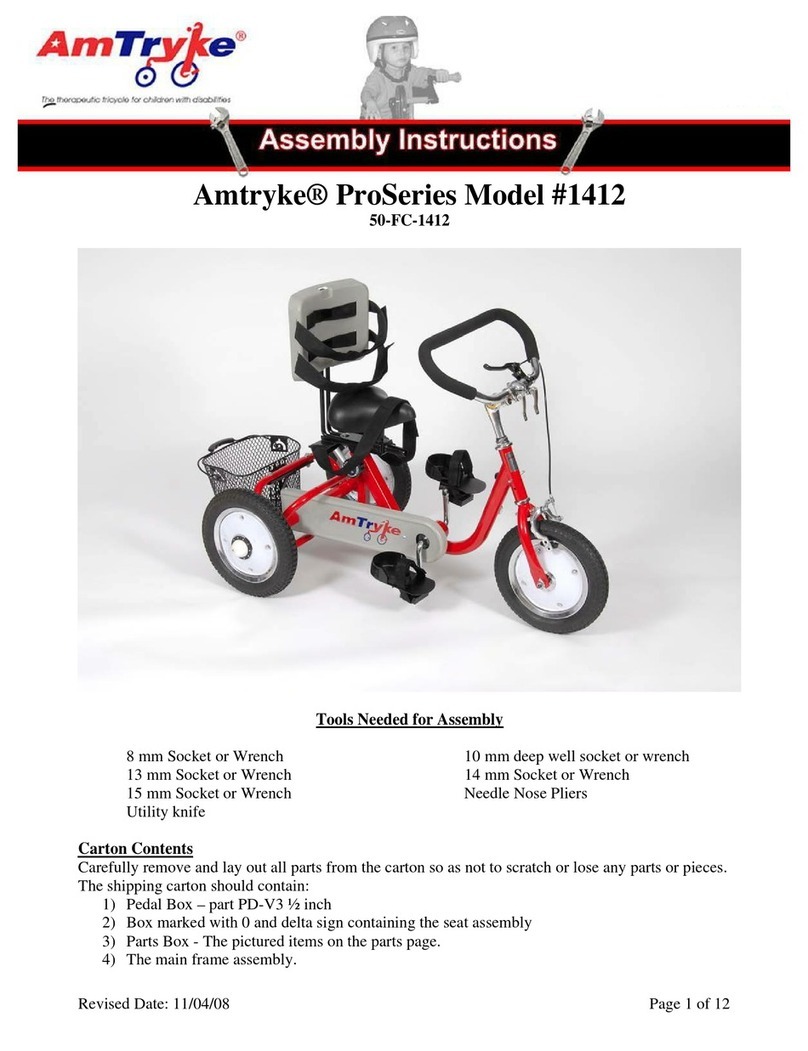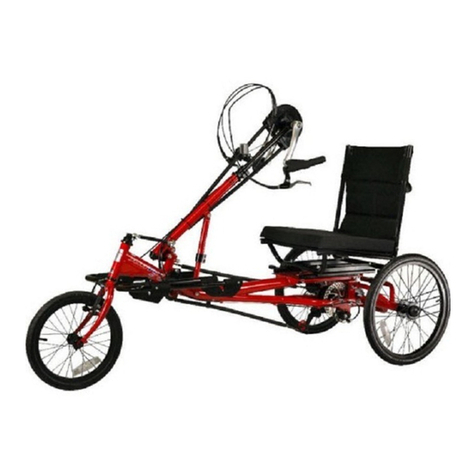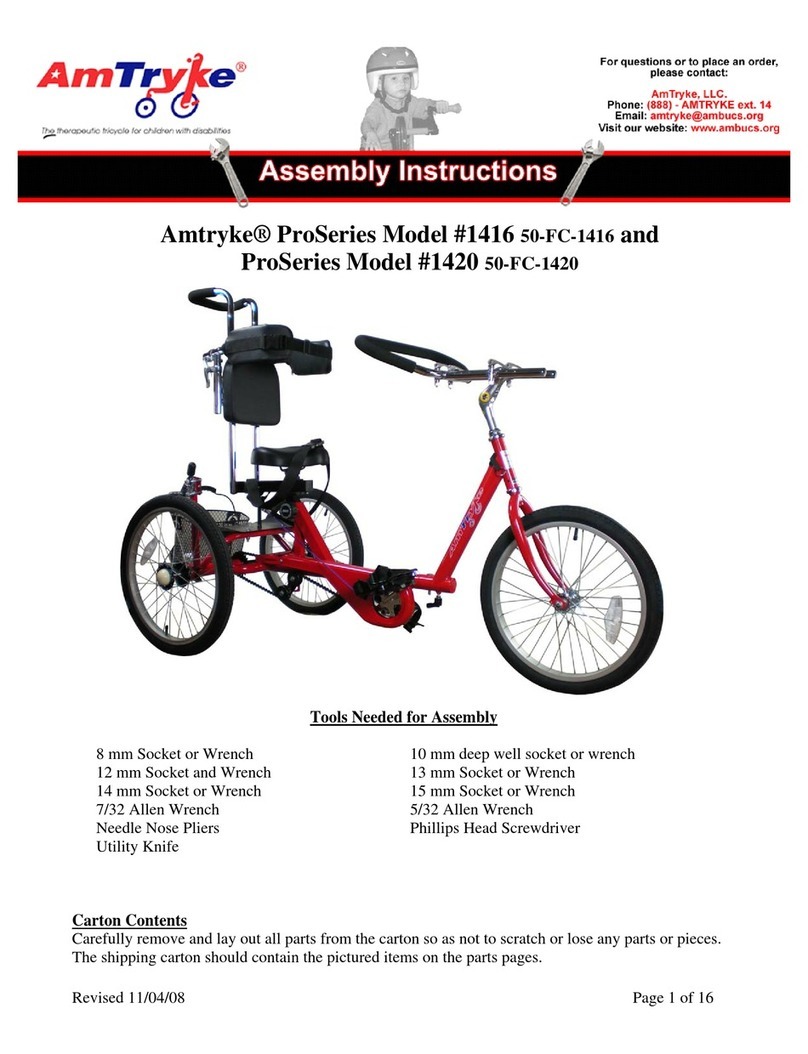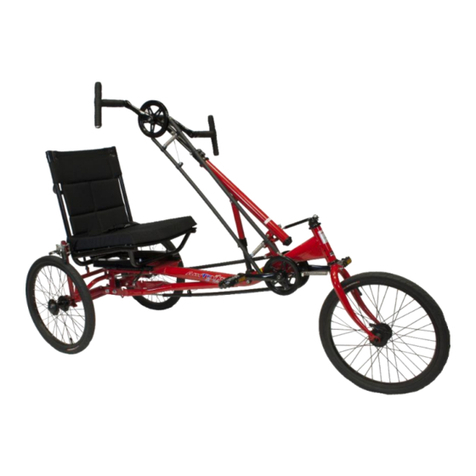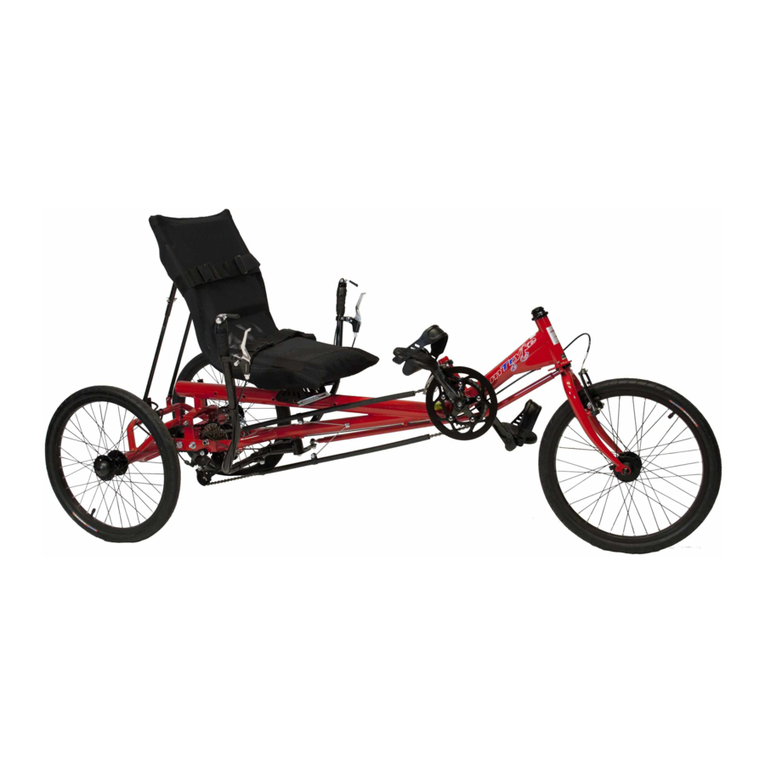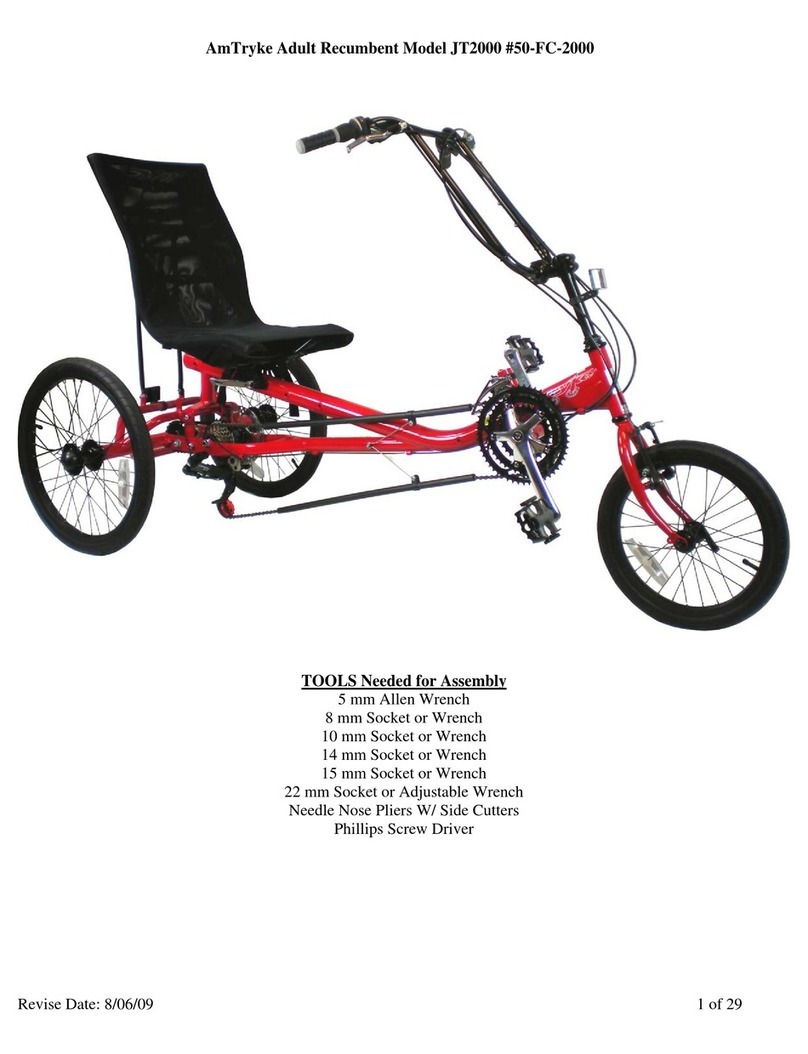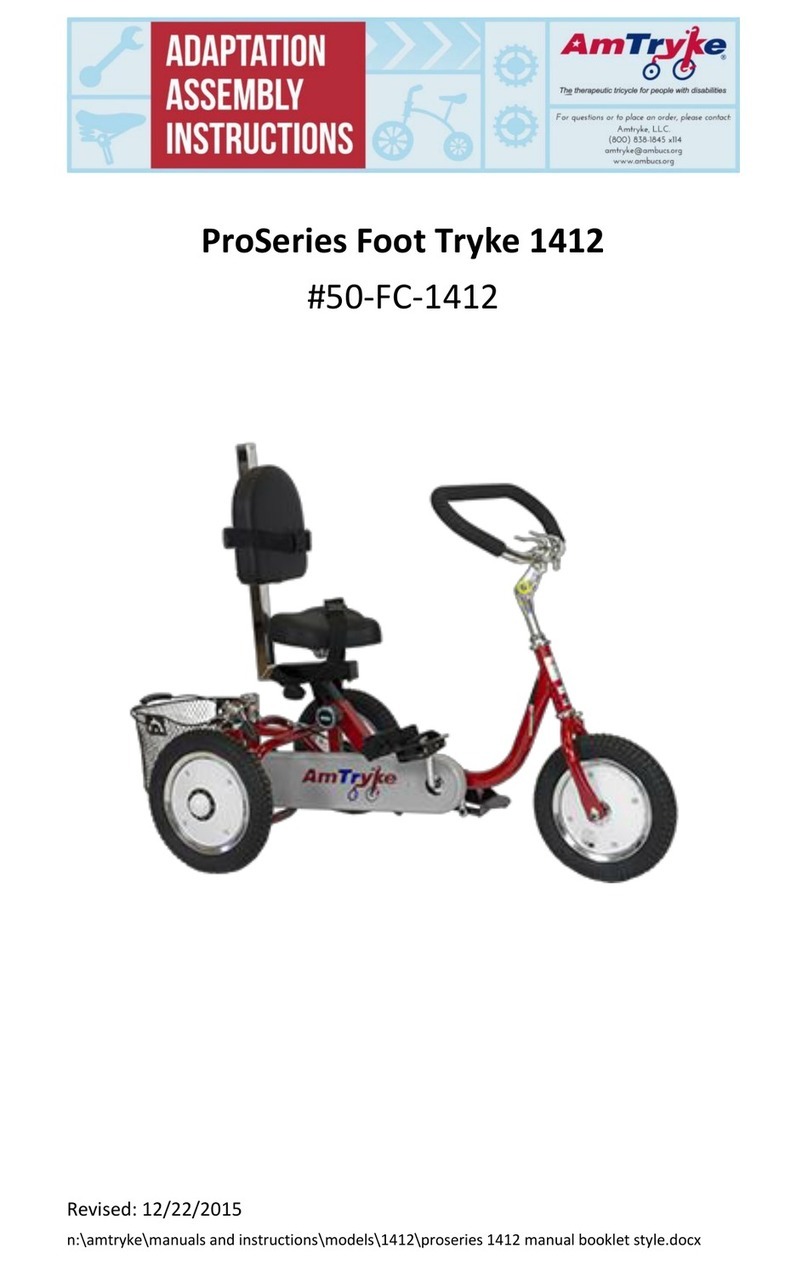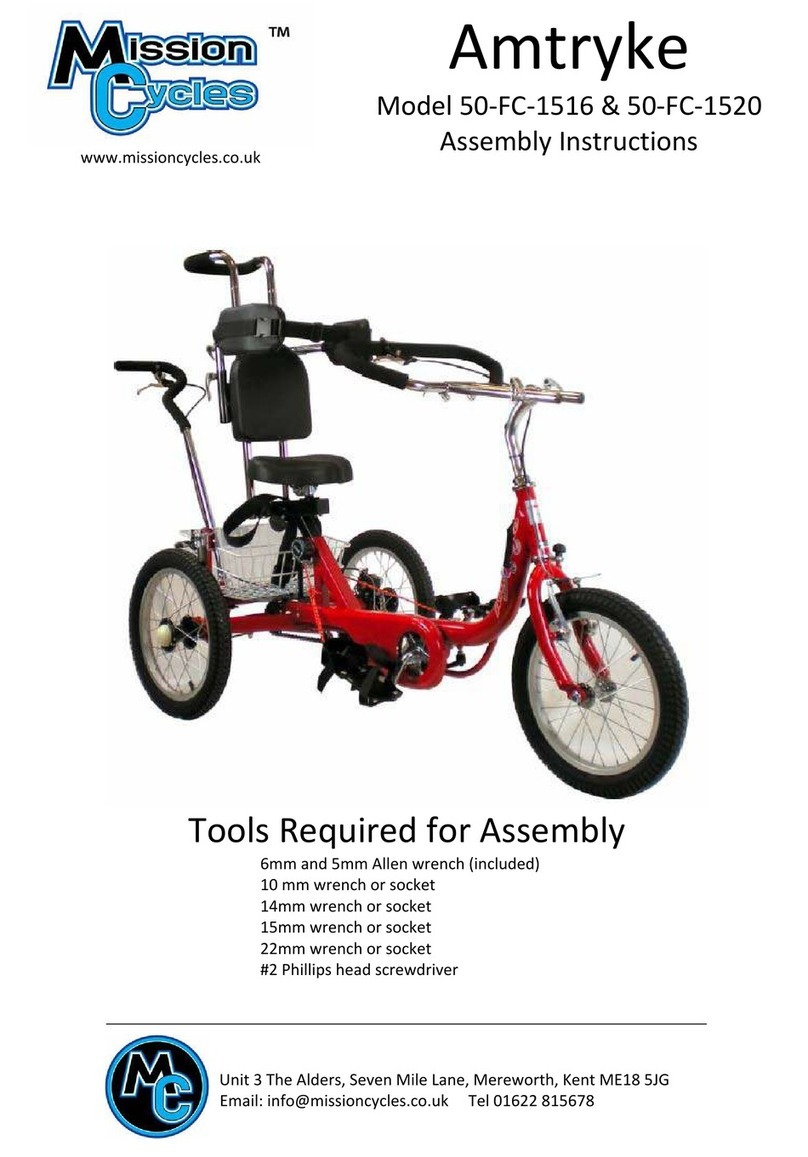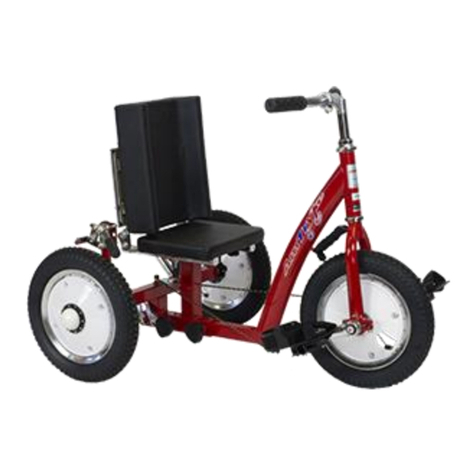Contents
About Amtrykes®.............................................................................................1
About This Manual ..........................................................................................1
Safety..............................................................................................................2
Safe Riding Tips................................................................................................ 2
Brakes.......................................................................................................... 4
Shift Gears................................................................................................... 4
Assembly Instructions .....................................................................................5
Getting Started ................................................................................................ 5
Frames ............................................................................................................. 7
Wheels............................................................................................................. 8
Parking Brake................................................................................................. 17
Handlebar ...................................................................................................... 17
Seat................................................................................................................ 18
Pedals ............................................................................................................ 21
Pedal Leveler Pulley .................................................................................. 22
Basket ............................................................................................................ 22
Steering Pin.................................................................................................... 23
Wheel Reflectors ........................................................................................... 23
Additional Assembly Instructions .................................................................. 25
Front Brake (Models 1416 and 1420) ............................................................ 25
Brake Lever and Cable............................................................................... 25
Brake Caliper ............................................................................................. 26
Brake Adjustment ..................................................................................... 27
3-Speed Model (1416 and 1420) ................................................................... 27
Rear Steering Bar with Hand Brake (Models 1516 and 1520) ....................... 29
Fitting Amtryke for Rider............................................................................... 32
Optional Accessories ..................................................................................... 33
Troubleshooting ............................................................................................ 33
Maintenance .................................................................................................34
Wheels and Tires ........................................................................................... 34
Brakes ............................................................................................................ 34
Chain.............................................................................................................. 34
Maintenance Schedule .................................................................................. 35
Warranty.......................................................................................................36
Useful Information ........................................................................................ 36
Amtryke Therapeutic Tricycle Program ......................................................... 36
Donations ...................................................................................................... 37
Returns and Refunds ..................................................................................... 38
Amtryke Sizing Charts ......................................... Error! Bookmark not defined.
Tools ................................................................... Error! Bookmark not defined.
